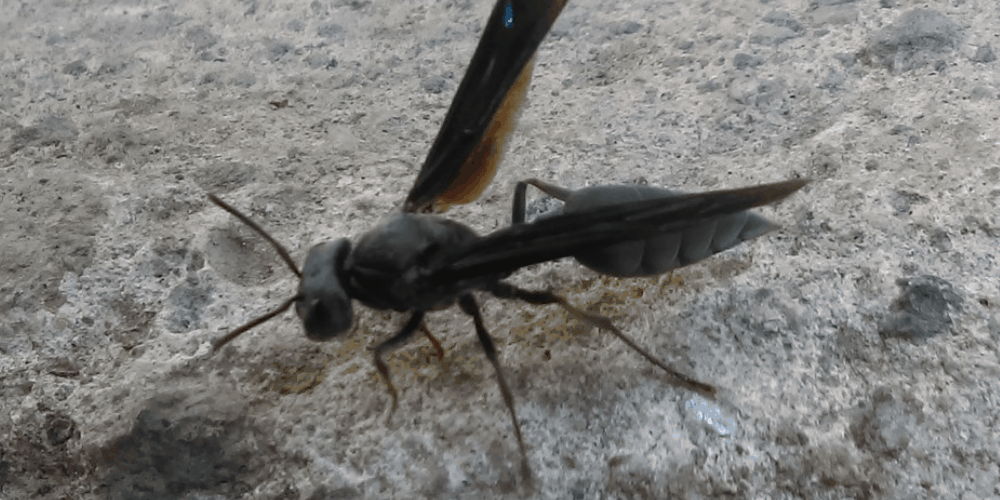Warrior wasps, Synoeca septentrionalis, are also known as armadillo wasps and drumming wasps. They are social wasps found in central and south America and are about 0.8 inches (2 cm) in length.
Is the warrior wasp sting painful?
The sting of the warrior wasp is one of the most painful of all insects. They are ranked in the highest category in the Schmidt insect pain index. The entomologist Justin Schmidt who compiled the list described the sting from this species of warrior wasp as ‘Torture. You are chained in the flow of an active volcano.’ See the most painful wasp stings here.

Do warrior wasps swarm?
Unlike other common wasp species these wasps swarm. That means they set up new colonies with up to 140 adults flying to a new site with a queen and establishing a new nest in a matter of days (source). This behavior is not seen in other social wasp species such as yellow-jackets for example. In most species, a colony is founded by a single queen. This swarming behavior is more efficient and has a far higher success rate. In order to facilitate swarming pheromones are released that act as a chemical trail. Very similar behavior is found in bees and ants.
Do warrior wasps have queens?
They have more than one queen. This is also unusual for wasp species. Most wasp species only have one queen and the colony is founded by this individual queen. Because warrior wasps have multiple queens it means they are able to swarm and establish new colonies. It also means the colony is not dependent on the survival of just one queen. A single colony may have up to 58 queens with a colony consisting of around 900 adults (source). Every female has the potential to become a queen but most are suppressed by existing queens through pheromones that restrict the development of ovaries.
Do warrior wasps have large nests?
Their nests can span over 3 meters. They make large paper nests found in trees and are easy to spot given their large size. Warrior wasps are extremely aggressive in defending their nests. They can be found in rainforest environments in South America. The nest is often constructed flat against a tree trunk or in the limb of a tree. As they are in the tropics a nest can be used over multiple years, unlike in North America when winter seasons spell the end of a nest site. Nests have been known to survive for up to 16 years. The nest is shaped liked an armadillo and gives them the nickname armadillo wasp.
What preys on warrior wasps?
Army ants are known to be a big threat to warrior wasps and will attack their nests attracted by the wasp larvae. They attack in very large numbers making it extremely difficult to defend against and rendering the powerful sting of the warrior wasp useless. If this happens warrior wasps may be forced to abandon their nest and swarm.
Are warrior wasps threatening?
If they feel that the nest is under threat they drum the nest with their mandibles (claw-like mouthparts). By scraping their mandibles across the nest surface on mass it creates a drumming sound. They are sometimes called drumming wasps because of this unique tactic. If the threat to the nest persists they are known to move aggressively towards a threat. They will beat their wings as a warning in an intimidating display.
